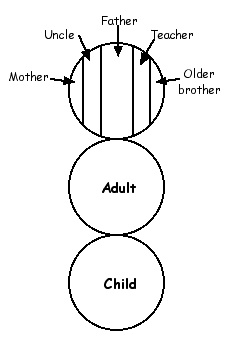The phenomena of copy cat suicide has been documented for some time. It is noted that there can be clusters of other suicide attempts after a suicide by those known to the deceased directly or even through the internet. It can also happen when a suicide for some reason gets a lot of publicity or a particularly high profile person suicides. This can lead to a spike in suicides and attempts by people who knew of the deceased through the publicity but was not know them personally.

It should also be noted that the copy cat effect could apply when some one is just talking about and demonstrating suicidal behaviour not only when a suicide is completed. For instance if one has a peer or relative who makes suicide attempts, talks about their suicidal thoughts and plans, displays suicide notes, displays stock piled medication, a tube for gassing self in a car or a rope for hanging self and so forth then there can be a copy cat effect.
Why would a person copy another individual who has suicided. It would seem that there are three possible psychological phenomena at work with copy cat suicides. It seems reasonable to conclude and the research would agree that the more emotional importance the suicidal person has to the individual the more likely the occurrence of a copy cat attempt. The most obvious one being a parent, a close loved one or with teenagers a close friend, member of his gang or community.

Look at how the man and boy are standing
Modelling. The term copy cat means precisely that, copying. People copy each other’s behaviour, thoughts and feelings especially of those who are important. Humans model on each other and in transactional analysis terms the modelled behaviour is placed in the Parent ego state as a tape. If the two other aspects of the personality, that is the Child and Adult ego states are consistent with suicidal behaviour then modelling suicidal behaviour could result in a copy cat suicide attempt being undertaken.

Parent ego state tapes
Permissions. In order to behave a certain way people sometimes seek permission from others to do so. This often happens in counselling. The client has decided on a course of action but feels unsure about it and thus seeks out a counsellor to get permission to do it. That may be to leave a marriage, change jobs, confront mother and so forth. If someone else says its OK to do it then the person feels more confident and secure in taking the course of action.
This of course can also apply for suicidal behaviour. If one has a parent or close friend who is talking about suicide, displaying methods of suicide, attempting suicide or even completes a suicide attempt this can be permission giving. By watching another person act in a certain way can be taken as a permission by the individual to behave in the same way. Again, if the rest of the personality is prone to suicidal behaviour then such permissions can lead to suicide attempts by the person.
This permission giving aspect of copy cat suicide attempts can lead to angst amongst parents of teenagers who listen to rock music that have lyrics about suicide. The parents see the rock stars as possibly giving permission to the teenagers to behave in suicidal ways. If the rock star is idolised by the teenager then the permission giving can be quite strong indeed. However rock music lyrics have never made anyone suicidal but it could play some sort of role in permission giving as is described here. If the rest of the personality is not consistent with suicidal acts then it is not going to happen.

Normalising behaviour. If a teenager is in a peer group where others are getting tattoos then the actual act of getting a tattoo become normalised. It is no longer seen as an abnormal act in the eyes of the teenager and thus he is more likely to get a tattoo of his own. If a teenager listens to a peer talk about and plan a suicide then that makes the behaviour more normal. If one sees mother complete a suicide that makes the behaviour more normal for the child.
Graffiti


0 comments:
Post a Comment